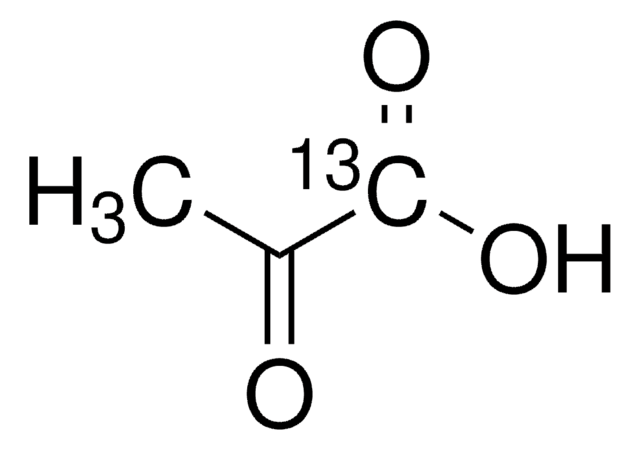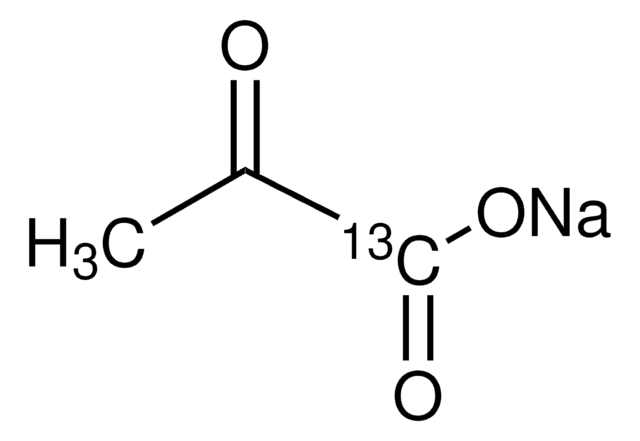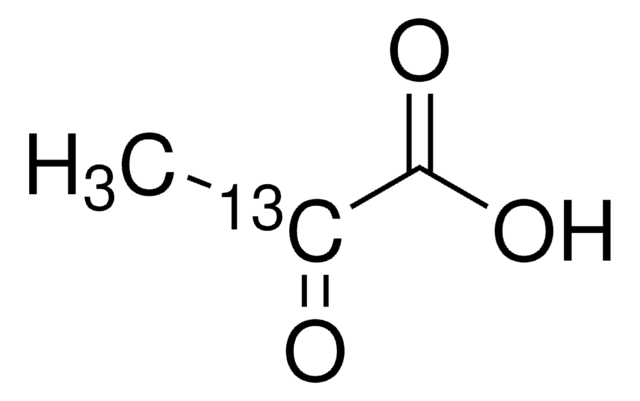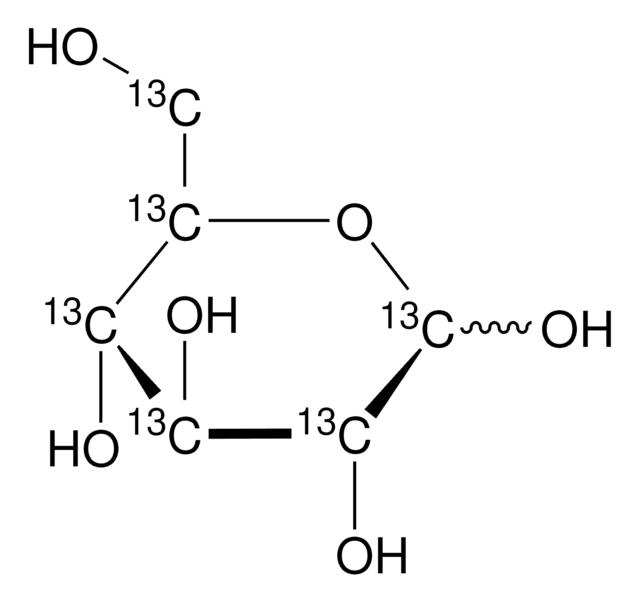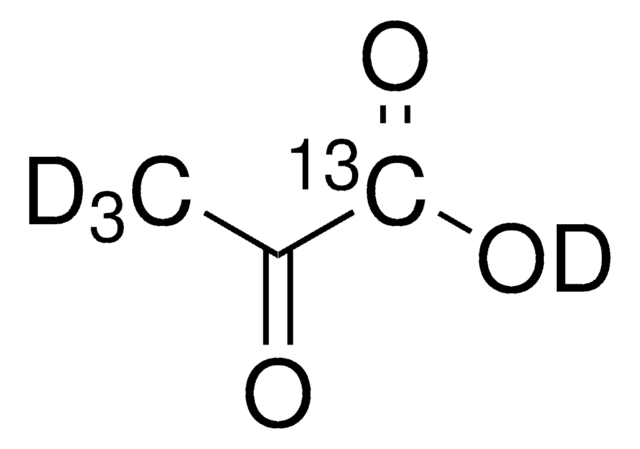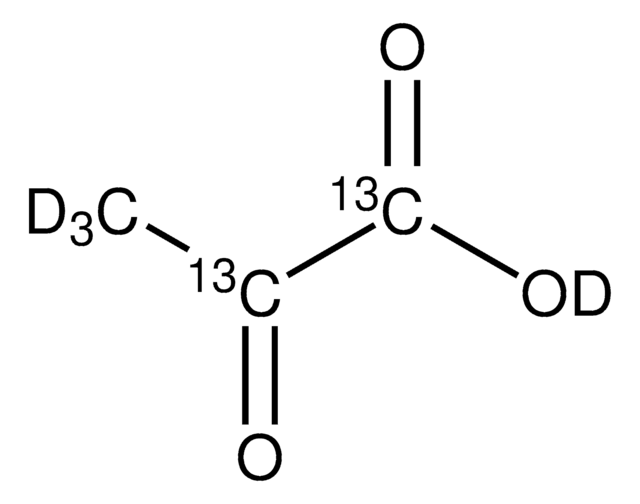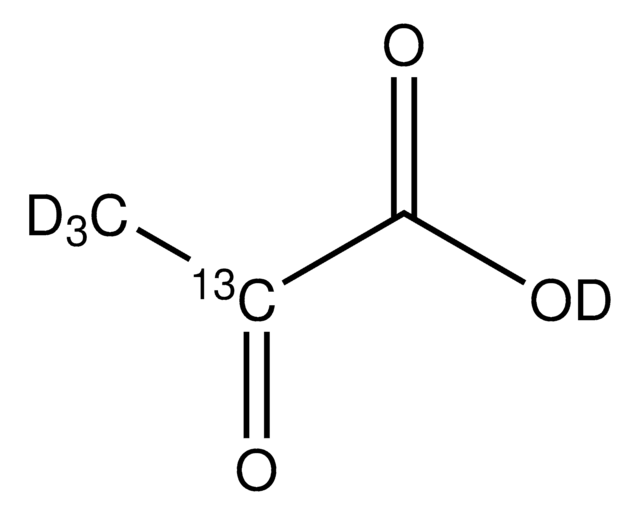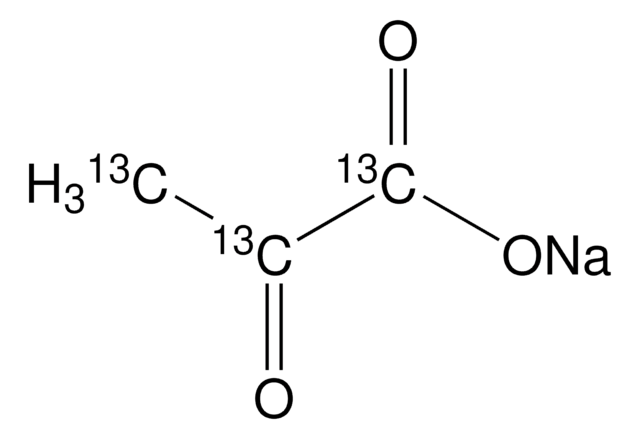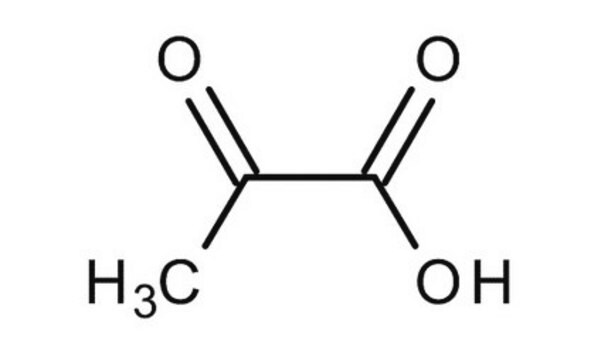W6578
Pyruvic-1-13C acid (free acid)
API for Clinical Studies, ≥99 atom % 13C
Sinónimos:
α-Ketopropionic acid-1-13C, 2-Oxopropionic acid-1-13C, 13C Labeled pyruvic acid, Pyruvic acid-1-13C
About This Item
Productos recomendados
grado
cGMP
Nivel de calidad
pureza isotópica
≥99 atom % 13C
Ensayo
≥95% (CP)
bp
165 °C
mp
11-12 °C
cambio de masa
M+1
Condiciones de envío
dry ice
temp. de almacenamiento
-10 to -25°C
cadena SMILES
CC(=O)[13C](O)=O
InChI
1S/C3H4O3/c1-2(4)3(5)6/h1H3,(H,5,6)/i3+1
Clave InChI
LCTONWCANYUPML-LBPDFUHNSA-N
¿Está buscando productos similares? Visita Guía de comparación de productos
Descripción general
Aplicación
Envase
Palabra de señalización
Danger
Frases de peligro
Consejos de prudencia
Clasificaciones de peligro
Eye Dam. 1 - Skin Corr. 1C
Código de clase de almacenamiento
8A - Combustible corrosive hazardous materials
Clase de riesgo para el agua (WGK)
WGK 1
Punto de inflamabilidad (°F)
179.6 °F - closed cup
Punto de inflamabilidad (°C)
82 °C - closed cup
Elija entre una de las versiones más recientes:
¿Ya tiene este producto?
Encuentre la documentación para los productos que ha comprado recientemente en la Biblioteca de documentos.
Los clientes también vieron
Artículos
Sigma-Aldrich.com presents an article concerning MRI/MRS and the use of isotopes in hyperpolarization.
Dynamic Nuclear Polarization (DNP) is a phenomenon by which high spin polarization, typically derived from a bath of free radical electrons, is transferred to a nuclear spin bath, enhancing the difference between the nuclear energy levels and thereby producing dramatically enhanced NMR signals for detection.
Nuestro equipo de científicos tiene experiencia en todas las áreas de investigación: Ciencias de la vida, Ciencia de los materiales, Síntesis química, Cromatografía, Analítica y muchas otras.
Póngase en contacto con el Servicio técnico